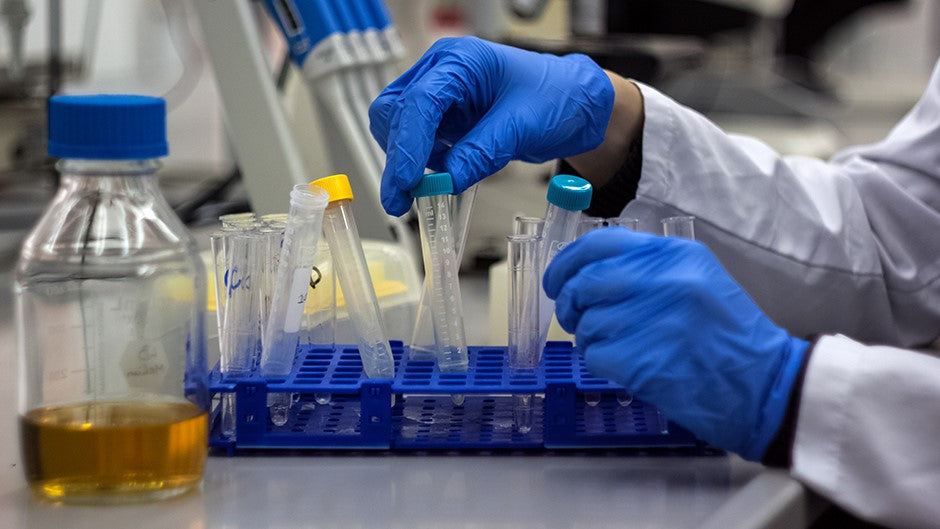
Early Toxicity Testing: Essential Essence of Drug Development
Share

Introduction
New drug development is a long and rigorous process that requires careful attention to detail. A key part of ensuring that a new drug is both effective and safe is toxicity testing. Early toxicity testing is essential for identifying potential harmful effects that a drug could have on living organisms. With advancements in technology, the methods and accuracy of early toxicity testing have greatly improved, making this phase even more crucial in drug development. As a result, the industry surrounding early toxicity testing has grown significantly, offering both investment opportunities and enhanced drug safety.
Emerging Testing Methods in Early Toxicity Testing
As the early toxicity testing industry evolves, several new methods and technologies are coming to the forefront, driving innovation and accelerating drug development.
1. High-throughput Screening (HTS) HTS is revolutionizing the drug discovery process by allowing the rapid testing of large numbers of compounds. By quickly screening thousands of potential drug candidates, HTS helps researchers identify the most promising drugs in record time. For example, Metrion Biosciences, a UK-based company, has recently invested heavily in expanding its HTS capabilities to increase early toxicity testing capacity. This shift could accelerate the development of safer, more effective drugs for the global market.
2. Organ-on-a-Chip Technology One of the most exciting advances in early toxicity testing is the development of organ-on-a-chip technology. By using microfluidic systems, researchers can replicate human organs in a lab setting to study the effects of drugs and toxins. This technology not only improves the accuracy of drug toxicity predictions but also reduces the need for animal testing. Companies like Emulate, Inc. are pioneering this technology, with models for the liver, kidney, and lung, offering more accurate testing and better safety profiling.
3. 3D Cell Culture Models Traditional 2D cell cultures have long been used for drug toxicity testing, but they don’t always provide the most accurate or predictive results. 3D cell culture models, however, grow cells in a more realistic, three-dimensional environment, leading to better predictions about how drugs will behave in the human body. These models can identify safety concerns early, allowing researchers to modify drugs accordingly before they reach clinical trials. Amerigo Scientific's launch of its new 3D cell culture platform marks a step forward in more reliable drug testing.
4. AI and Machine Learning Artificial intelligence (AI) and machine learning (ML) are beginning to play an integral role in the drug development process, particularly in predicting toxicity. AI algorithms analyze large datasets to identify patterns that may be too subtle for humans to detect, and they can predict toxicity more accurately and efficiently. For instance, the development of tools like ImageTox, an AI-based program by CISPA, uses computer vision to predict chemical toxicity, significantly improving the early stages of drug development.
Prominent Companies in Early Toxicity Testing
Several companies are leading the charge in innovating and providing early toxicity testing services, contributing to the rapid growth of this market.
1. Charles River Laboratories A key player in the field, Charles River Laboratories provides extensive contract research services to the pharmaceutical and medical device industries. The company recently launched ApolloTM, an industry-leading secure cloud platform for toxicology study data, which enhances drug discovery by simplifying data management and increasing the speed of testing.
2. Laboratory Corporation of America Holdings (Covance) Covance has a reputation for offering robust toxicology testing services, including in vitro assays and animal models. In 2022, Labcorp introduced a standalone clinical development business that focuses on diagnostics and drug development, further enhancing its capabilities to support early toxicity testing.
3. Eurofins Scientific Eurofins is another leader in the field, offering a broad array of toxicology testing services, such as genotoxicity testing and reproductive toxicity testing. The company continues to innovate, with its launch of the FDA-authorized Surrogate Virus Neutralization Test (sVNT), which offers a cost-effective alternative for detecting neutralizing antibodies.
4. InSphero InSphero specializes in 3D cell culture models for drug discovery and toxicity testing. In 2023, the company collaborated with Vrije Universiteit Brussel (VUB) to improve drug discovery for nonalcoholic steatohepatitis (NASH) using its 3D InSight Microtissue Technology, providing a more predictive model for early toxicity testing.
Conclusion
Early toxicity testing plays an essential role in drug development by identifying safety concerns and ensuring that new therapeutics are safe for patients. With the rise of innovative technologies such as high-throughput screening, organ-on-a-chip models, 3D cell cultures, and AI, the early toxicity testing industry is poised for significant growth. Companies like Charles River Laboratories, Covance, and Eurofins Scientific are leading this charge, offering cutting-edge solutions that help streamline the drug development process.
For investors, the rapidly growing early toxicity testing market represents a significant opportunity. With technological advancements continuously improving drug safety and reducing time-to-market, the potential for returns is high. The future of drug development will rely heavily on the continued evolution of early toxicity testing, and investors who support this field will be part of a critical sector that ensures the safety and efficacy of tomorrow’s medicines.